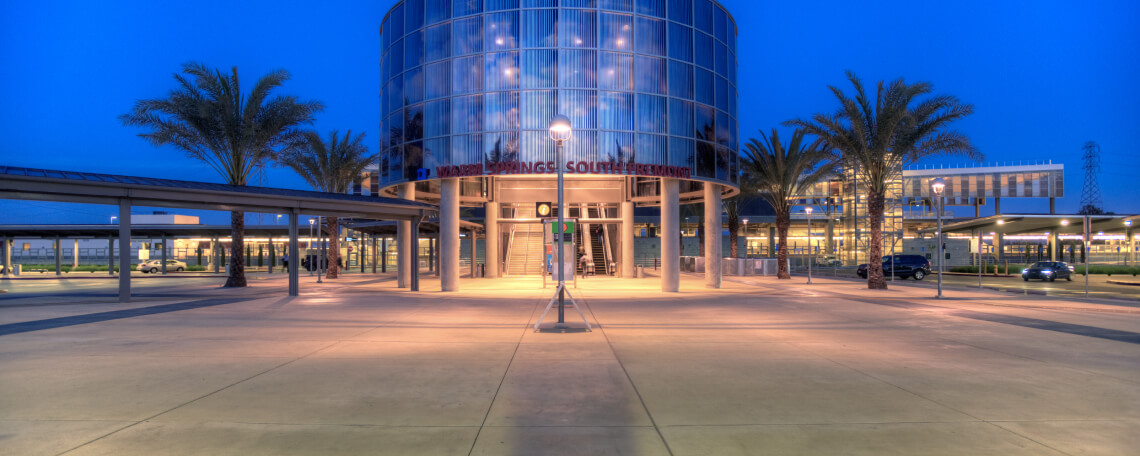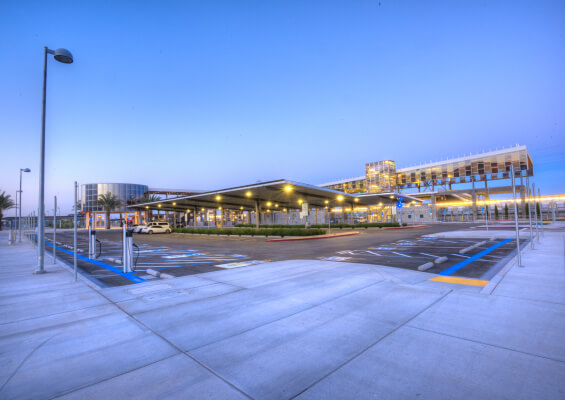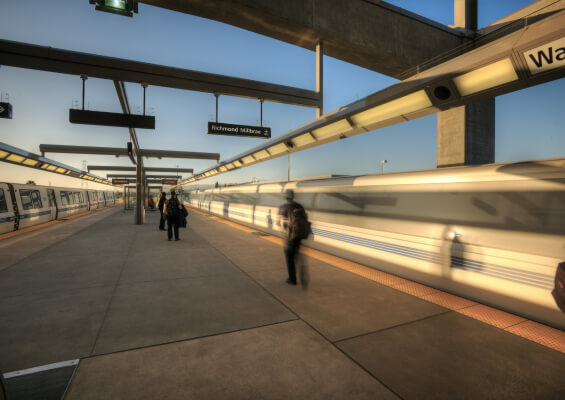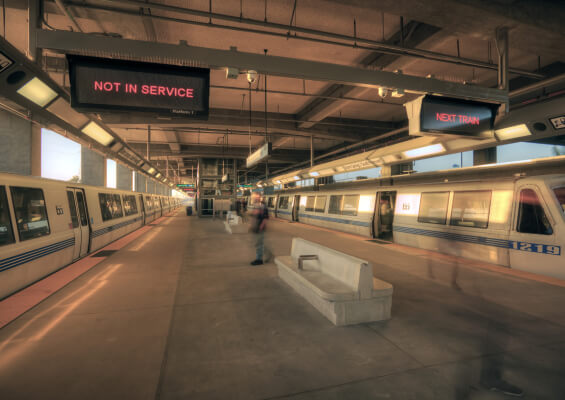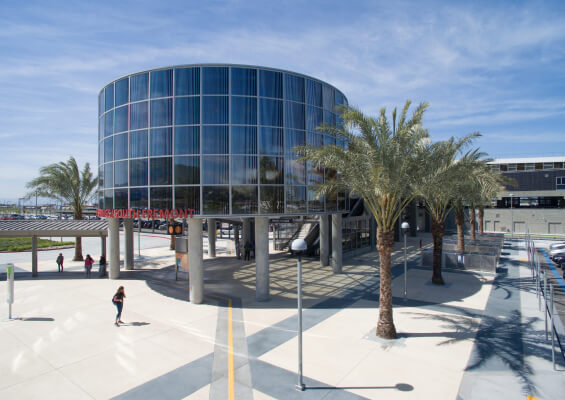HNTB was the lead designer for a 5.4-mile design-build project that extends the Bay Area Rapid Transit’s rail line from Fremont Station to a new Warm Springs Station. The project’s Walnut Avenue Bridge is a first for the United States. It straddles the Hayward Fault and is designed to survive severe fault displacement from a magnitude 7.25 earthquake, allowing trains to resume operation within a reasonable time.
HNTB used computer modeling software to analyze the effects different seismic events would have on a bridge in the fault zone. After collaborating with BART, the contractor and the University of California, Berkeley, HNTB produced a cutting-edge design: a post-tension, concrete through-girder railroad bridge supported on short seat-type spread footing abutments on top of mechanically stabilized earth walls. The MSE wall supporting southern abutment rests on a load transfer slab, protecting the MSE walls and abutment from extreme differential ground movements.
The architecture and structural design scope of work focused on the fixed facilities including bridges (foundations, columns, superstructure), retaining walls and miscellaneous buildings and facilities. The civil design scope evaluated the resulting impacts to the existing roadway, utilities and drainage facilities and included design of street modifications, utility and storm drain relocations, hazardous waste handling and removal, landscape reconstruction, signing, striping, lighting, signaling and maintenance of traffic. Systems design focuses on automated fare collection system, traction power system, communication systems, and systems acceptance.
- Bridge straddling fault is first for United States
- Designed to survive displacement from 7.25 earthquake
- Trains can resume operation within reasonable time
Location: Fremont, CA
Client: Bay Area Rapid Transit
Services: lead design, design build, bridge design, architecture and structural design
